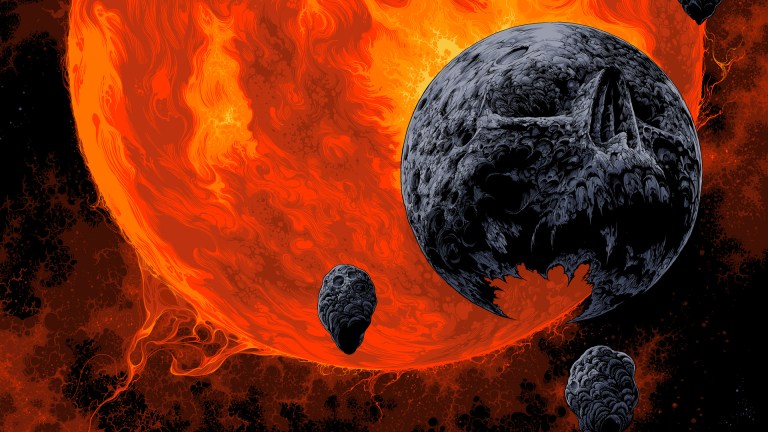Sinister Solar System
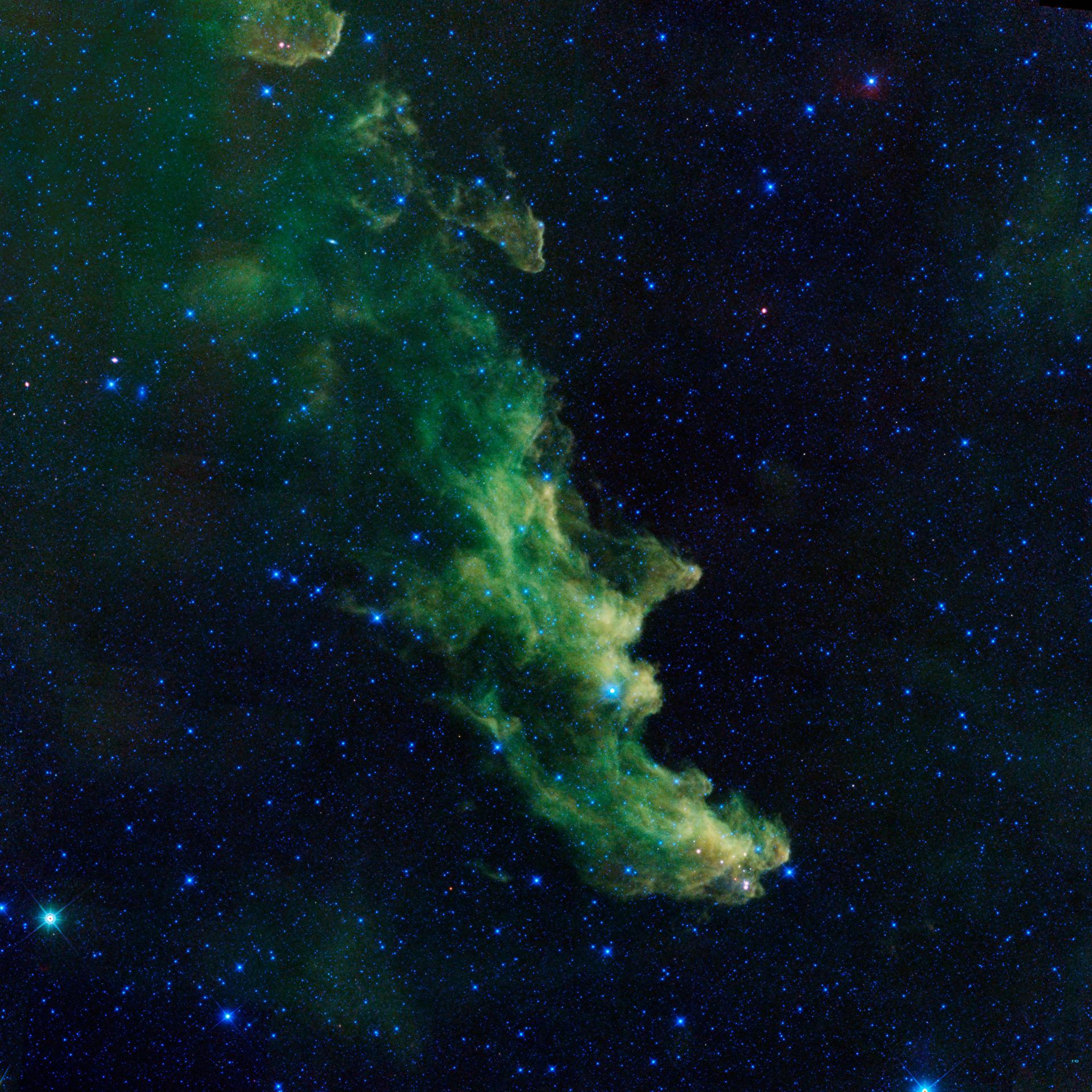
Sinister Solar System Features
-
01
Perseverance Captures ‘Googly Eye’ During Solar Eclipse
From its perch on the western wall of Mars’ Jezero Crater, NASA’s Perseverance rover recently spied a “googly eye” peering down from space. The pupil in this celestial gaze is the Martian moon Phobos, and the iris is our Sun.
 NASA’s Perseverance rover captured the silhouette of the Martian moon Phobos as it passed in front of the Sun on Sept. 30, 2024.
NASA’s Perseverance rover captured the silhouette of the Martian moon Phobos as it passed in front of the Sun on Sept. 30, 2024. -
02
‘Blood-Soaked’ Eyes: NASA’s Webb, Hubble Examine Galaxy Pair
Stare deeply at these galaxies. They appear as if blood is pumping through the top of a flesh-free face. The long, ghastly “stare” of their searing eye-like cores shines out into the supreme cosmic darkness.
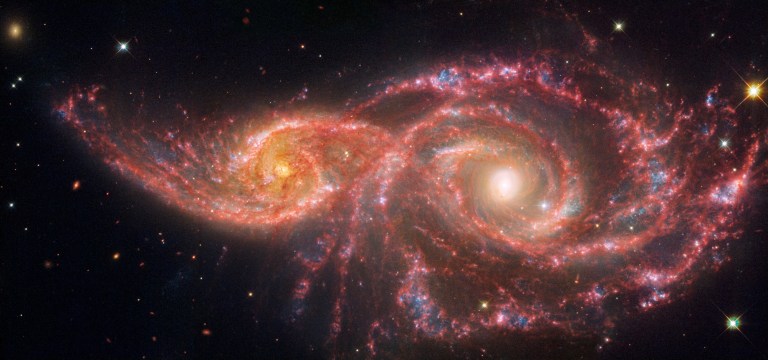 This observation combines mid-infrared light from NASA’s James Webb Space Telescope, and ultraviolet and visible light from NASA’s Hubble Space Telescope.
This observation combines mid-infrared light from NASA’s James Webb Space Telescope, and ultraviolet and visible light from NASA’s Hubble Space Telescope. -
03
That Halloween When a Dead Comet Flew by Earth
A large space rock zipped past Earth on Halloween in 2015. It most likely was a dead comet and, fittingly, it had an eerie resemblance to a skull.
 This animation was created using radar data collected by the National Science Foundation's 1,000-foot (305-meter) Arecibo Observatory in Puerto Rico.
This animation was created using radar data collected by the National Science Foundation's 1,000-foot (305-meter) Arecibo Observatory in Puerto Rico. -
04
NASA X-ray Telescopes Reveal the “Bones” of a Ghostly Cosmic Hand
In 1895, Wilhelm Röntgen discovered X-rays and used them to image the bones in his wife’s hand, kicking off a revolutionary diagnostic tool for medicine. Now two of NASA’s X-ray space telescopes have combined their imaging powers to unveil the magnetic field “bones” of a remarkable hand-shaped structure in space. Together, these telescopes reveal the behavior of a dead collapsed star that lives on through plumes of particles of energized matter and antimatter.
Pulsar wind nebulas like MSH 15-52 are clouds of energetic particles, producing X-rays, that are driven away from dead collapsed stars. X-rays from Chandra (gold and blue); infrared from the Dark Energy Camera KPNO Blanco 4.0m (red and blue) -
05
Hubble Celebrates Halloween With a Glowering, Dying Star
A hypnotizing vortex? A peek into a witch's cauldron? A giant space-spider web? Nope, it's a Hubble image of the red giant star CW Leonis. The image comes just in time for celebrating Halloween with creepy celestial sights.
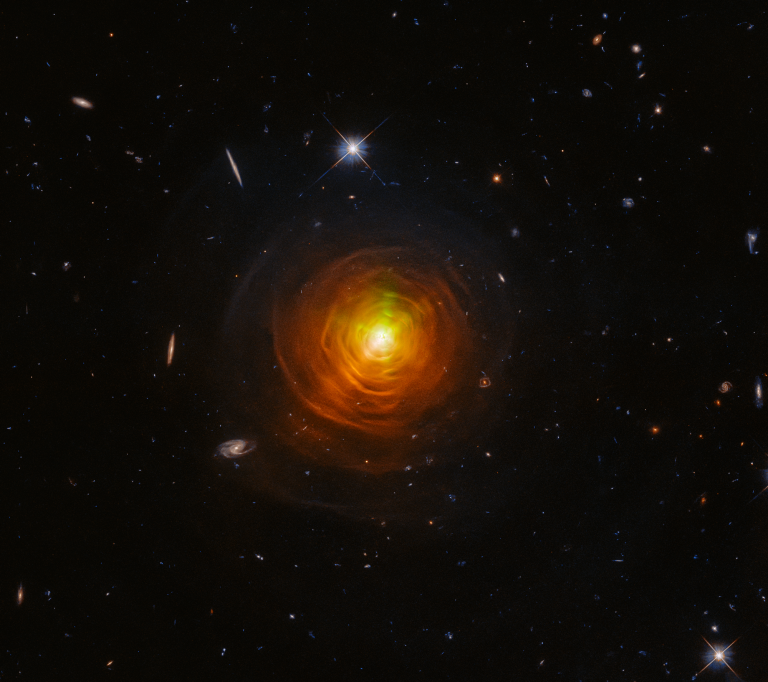 The red giant star CW Leonis resembles orange-red cobwebs.
The red giant star CW Leonis resembles orange-red cobwebs. -
06
Strange, Alien Face on Mars
NASA's Viking 1 Orbiter spacecraft photographed this region of Mars on July 25, 1976, while searching for a landing site for the Viking 2 Lander. Due to processing errors, the photo became famous because it resembles a human (or maybe alien?) face.
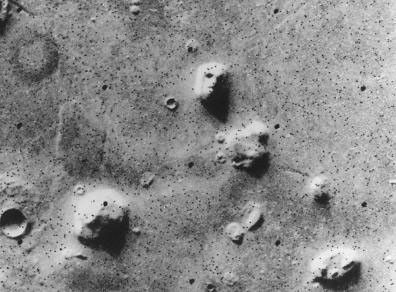 NASA's Viking 1 Orbiter spacecraft photographed this "face" on Mars on July 25, 1976, while searching for a landing site for the Viking 2 Lander.
NASA's Viking 1 Orbiter spacecraft photographed this "face" on Mars on July 25, 1976, while searching for a landing site for the Viking 2 Lander. -
07
Lucy Spacecraft is Named for a Skeleton
Around Halloween 2021, NASA launched the Lucy mission on a journey to a part of our solar system that has swarms of mysterious Trojan asteroids. And the spacecraft is actually named for a skeleton! Lucy is named for a fossilized skeleton of a human ancestor, which was named for the Beatles song "Lucy in the Sky with Diamonds."
 The Lucy fossil photographed in 2009.
The Lucy fossil photographed in 2009. -
08
Scary Pumpkin Sun
Active regions on the Sun combined to look like a jack-o-lantern’s face on Oct. 8, 2014. The active regions appear brighter because those are areas that emit more light and energy — markers of an intense and complex set of magnetic fields hovering in the Sun’s atmosphere, the corona. This image blends together two sets of wavelengths at 171 and 193 angstroms, typically colorized in gold and yellow, to create a particularly Halloween-like appearance.
 Active regions on the Sun make it look like a jack-o'-lantern.
Active regions on the Sun make it look like a jack-o'-lantern. -
09
With A Deadly Embrace, ‘Spidery’ Pulsars Consume Their Mates
Black widow spiders and their Australian cousins, known as redbacks, are notorious for their tainted love, expressed as an unsettling tendency to kill and devour their male partners. Astronomers have noted similar behavior among two rare breeds of binary system that contain rapidly spinning neutron stars, also known as pulsars.
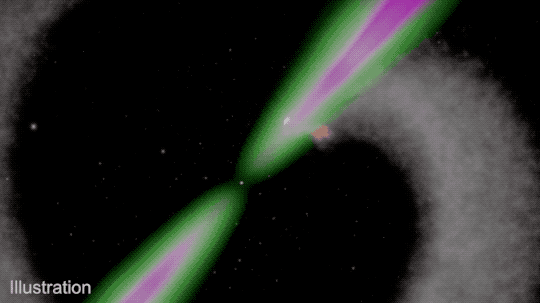 In this illustration of a black widow pulsar from above its orbital plane, gas blown off the companion star trails along its orbit and diffuses throughout the system but is densest along their orbital plane.NASA's Goddard Space Flight Center/Cruz deWilde
In this illustration of a black widow pulsar from above its orbital plane, gas blown off the companion star trails along its orbit and diffuses throughout the system but is densest along their orbital plane.NASA's Goddard Space Flight Center/Cruz deWilde -
10
A ‘Monster' Star-Forming Region Spied by NASA's Spitzer
Do you see a monster in this picture? Do the bright spots near the top of the image look like the piercing eyes and elongated snout of Godzilla?
 A line drawing highlights parts of this nebula that resemble the movie monster Godzilla.
A line drawing highlights parts of this nebula that resemble the movie monster Godzilla.
Take a Haunted Hayride Through the Sinister Solar System
Sinister Sounds of the Solar System
Have you heard the scary noises from across our universe before? Using data from our spacecraft, scientists gathered sinister sounds from the depths of space. Listen to our playlist filled with new “moans” and “whistles” that would scare the most ghoulish of creatures.
Halloween Activities and Downloads
-
01
Decorate Your Walls With the 'Horrors' of Our Galaxy
Learn more about zombie worlds, rains of terror, and flares of furry when you decorate your walls with the Galaxy of Horrors posters. Get in the sinister spirit and download the posters.
-
02
Make a Planet Mask!
Looking for easy costume ideas this year? Become one of your favorite planets! Download these printable face cut-outs.
-
03
NASA Pumpkin Stencils
Celebrate the fall season and Halloween by making your very own NASA Space Place pumpkins with these easy-to-use stencils!
-
04
How Scary is Space?
In a scary Halloween movie, monsters, ghouls, and haunted houses can give you the creeps! Those things are, of course, just stories that were made up to give you a fright. If you want a real scare, check out these nine unearthly nightmares that could be happening right now in our own galaxy. Eek!
-
05
Travel to the Universe of Monsters
In dark corners of the galaxy are worlds fit for creatures of the night. Explore the homes of Frankenstein’s monster, Dracula’s lair, the place where zombies roam, and more.
-
06
Enjoy Planet Candies
A whimsical collection of cosmic candies. Ready to download and share. Enjoy.
-
07
Carve a Pumpkin Like a NASA Engineer
Our engineers are famous for designing spacecraft and telescopes, but did you know they were out-of-this-world pumpkin carvers? View their handiwork.
-
08
Use Candy to Describe Rocks like a Scientist
Pick your favorite Halloween candy bar and learn how to study rocks like NASA scientists do!
